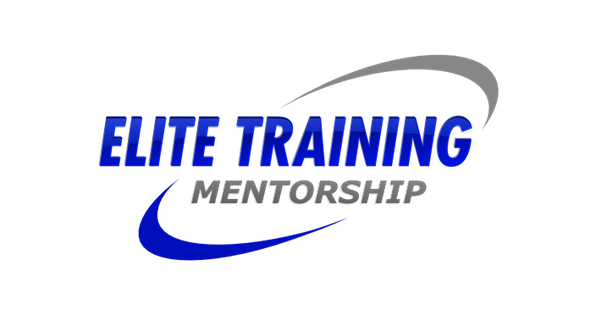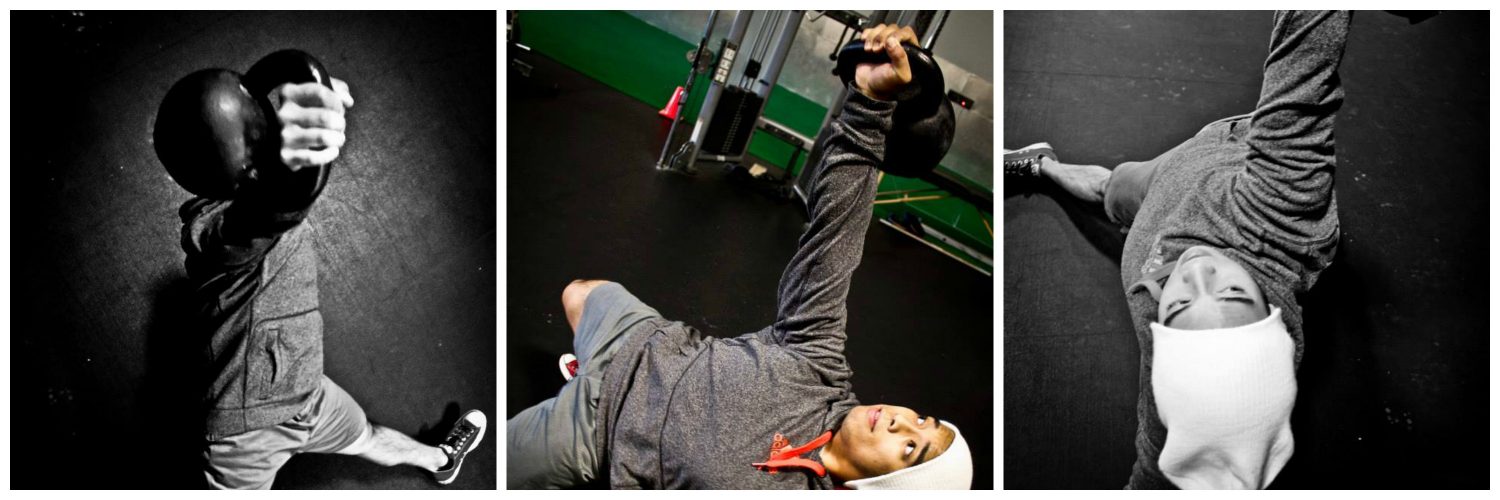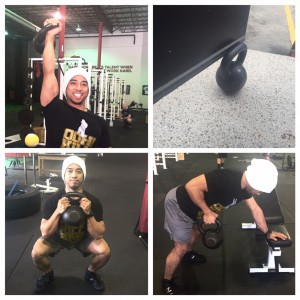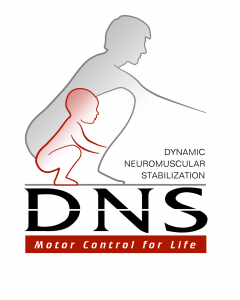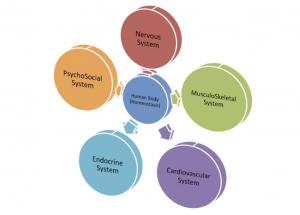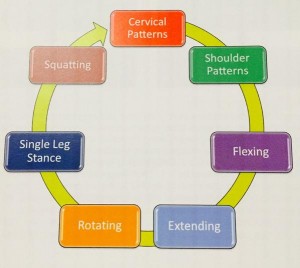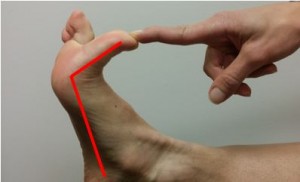I’m continuously fascinated by how much one part of the body that seems so far away from another can affect another body part. In this case, I’m super interested in how a lack of flexibility can affect your hands and wrists!
Interestingly, the most I can point to is the concept of relative stiffness from Sahrmann, and regional interdependence in which a proximal area (shoulders) will affect a distal structure (hands and wrists).
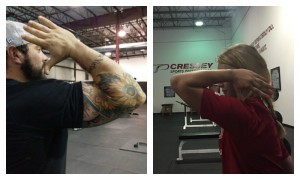
Question: In the above picture, would the left or right individual have an easier or harder time setting up a traditional front squat position from the shoulder position on up?
Essentially if you are stiff up top, your range of motion will obviously be affected up top. Thusly, you may “ask” of your body to move where there is a path of least resistance – and thus the smaller structures involving the elbows, forearms, wrists, and even hands may display different movement patterns. This is opposed to if you aren’t as tight or stiff up top!
Long story short, if you have short or stiff lats, this may affect what is going on at the biceps, which can affects what goes on at the forearms, which can affect what’s going on at your wrists and hands!
This is of course, assuming you have had a pre-disposition towards these range of motion deficits. I’ve seen many athletes that walk in our door display a lack of shoulder range of motion, but make up for it further down the chain (and have a shift to the right in wrist and forearm pronation).
But what happens if you apply a stressor such as a sport (such as baseball) or even lifting heavy weights in the context of hand or wrist issues?
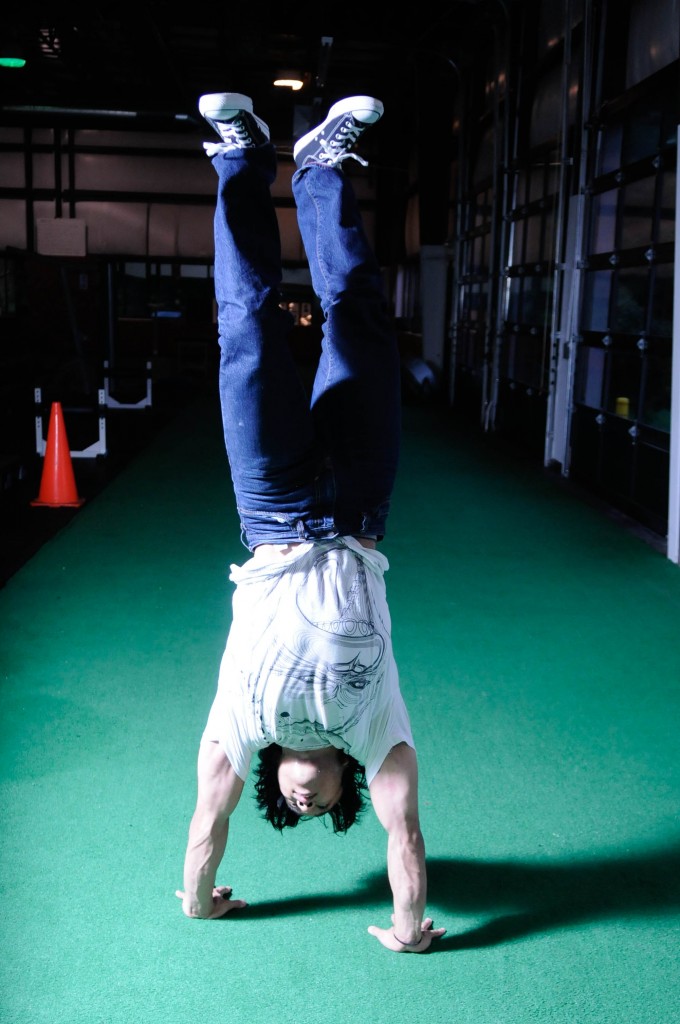
Well, sometimes blood flow to an area can create a residual or superficial warming up of the affected area, and movement improves.
This is a good thing.
Other times, however, you can aggravate your issues further by ignoring the specific issue, and overgeneralizing your warm-up, and the condition is glossed over.
This is a bad thing.
For example, take into account one athlete that came into our doors earlier this year:
As you can see, there is a lack of closed chain wrist extension (or the ability to place her hands on the ground flat, and move her wrist into extension past 90°. There was even a discrepancy from hand to hand, which was concerning to me. Perhaps there was a soft tissue problem that can be alleviated, but if not there may be something else going on!
Turns out she competes in pole vaulting. (Watch some high level pole vaulting here.) This motion is exacerbated when she bench presses, and rightfully so as the barbell compresses her carpal bones in a not-so-fun manner.
So what are some easy fixes that can be done if you have issues with compression?
Well, from a joint appraisal point of view, assessing rib mobility will allow you greater input towards what occurs at the glenohumeral joint, which can affect shoulder flexion, extension, and internal & external rotation. This seems to be first. Afterwards, identifying range of motion at the hand, wrist, and forearm will be next.
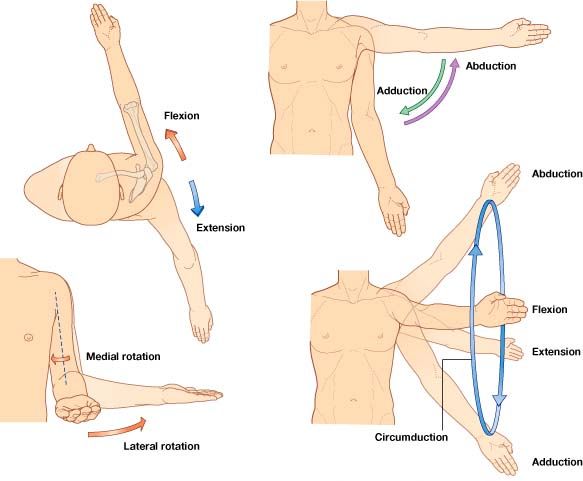
Next, we assessed what was happening with her bench press technique.
If you don’t keep in mind the specificity of what happens when someone does an activity, you may be caught in a “corrective exercise rabbit hole” that you won’t be able to dig yourself out of.
Turns out her wrist position was not ideal, and we also assessed her ability to deliver high tension techniques in her bench press, which was improved after a few minutes of coaching.
Read: Wrapping the Barbell in the Bench Press
Developing a Simple Plan of Action with Exercise Combinations
To give a few really easy drills of what we did from an exercise combination point of view:
1. Golf Ball on Forearm/Hand for Neurological Inhibition (or loosening up the structures on superficial level)
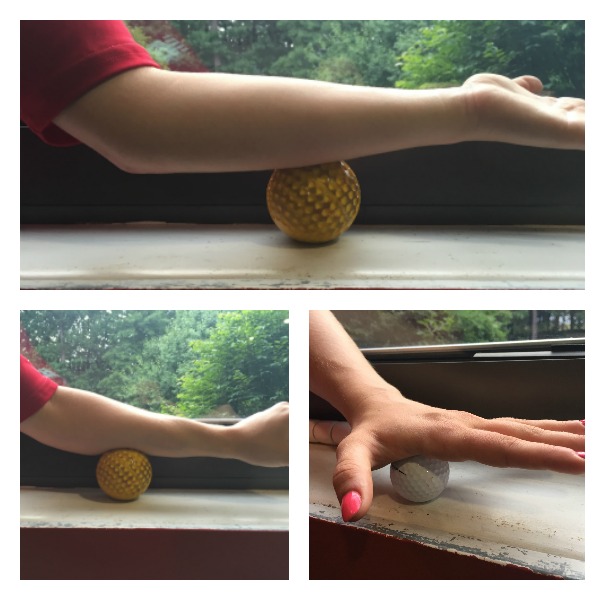 2. 1-Arm Lat Stretch with Hand Distraction
2. 1-Arm Lat Stretch with Hand Distraction
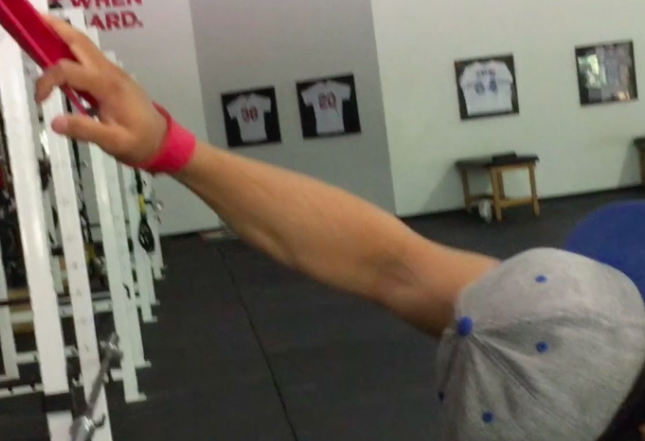
3. Fixed her bench press technique.
These few items helped alleviate or at the very least, staved off any problematic issues from preventing her from competing in either powerlifting or pole vaulting.
These sports are not the only sports that are affected or plagued by hand issues. There are tons of them out there – gymnastics, bboying, any contact sport involving pushing, CrossFit even – not to mention even typing on a computer or laptop for 8 hours a day for hours on end will create carpal tunnel like syndromes that can be alleviated with some simple exercises.
In Conclusion…
With these tips in mind, I have a slew of other exercises that were utilized to help improve hand, wrist, and forearm range of motion for those who are lacking the ability to get into certain positions with their upper limbs. If you’re interested, I have a whole webinar dedicated to this topic, and it can be found at Elite Training Mentorship here.
—> Join Elite Training Mentorship TODAY <—
As a part of the Cressey Sports Performance webinar library, I also have uploaded several exercise demonstrations along with monthly webinars that go over functional anatomy and exercises that you can begin using today in the gym – without all the fancy philosophy and rhetoric.
You can join today for less than a weekend out in the city, and get a ton of different content (including all of the past content) to help you coach and train your clients today. Make sure to check it out at EliteTrainingMentorship.com.
As always,
Keep it funky.



